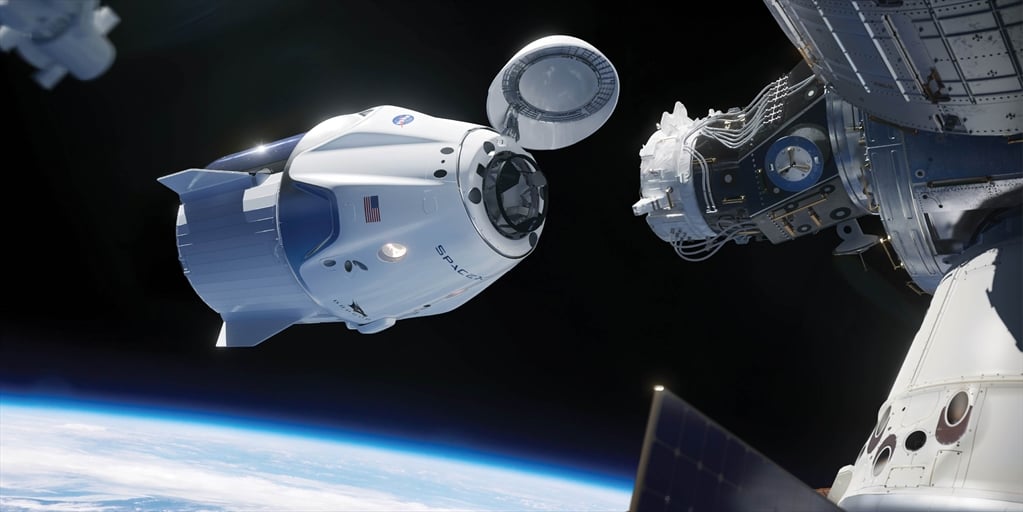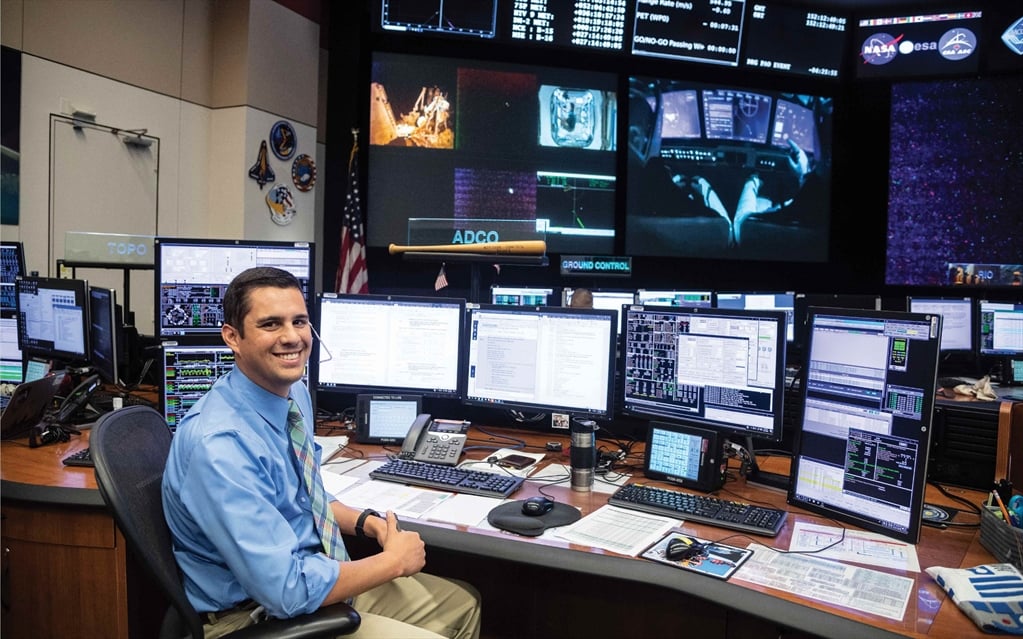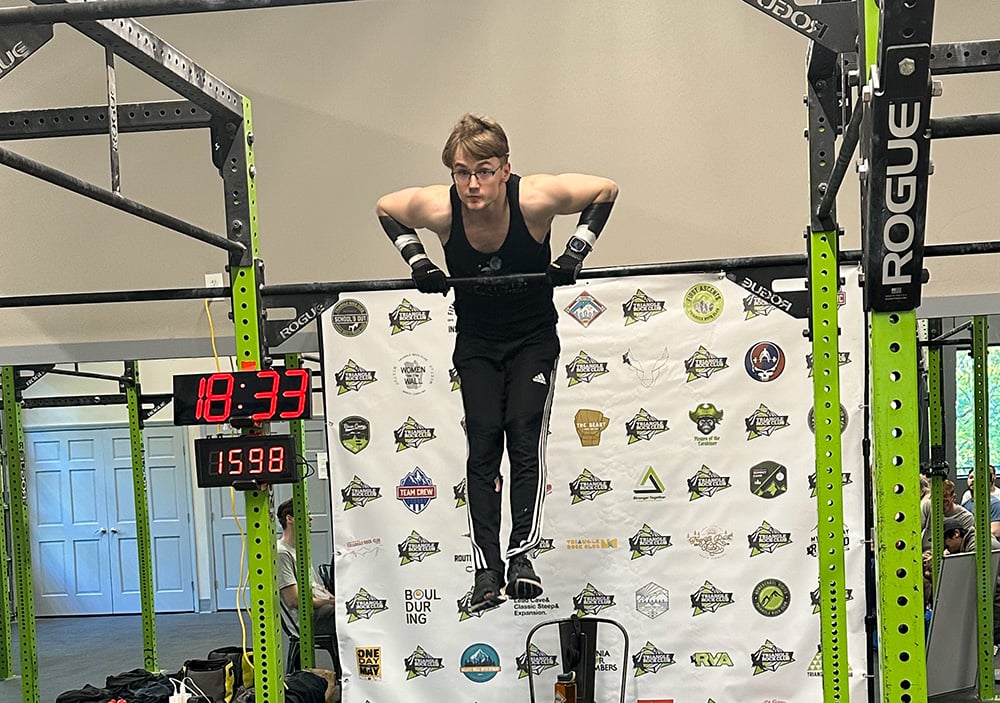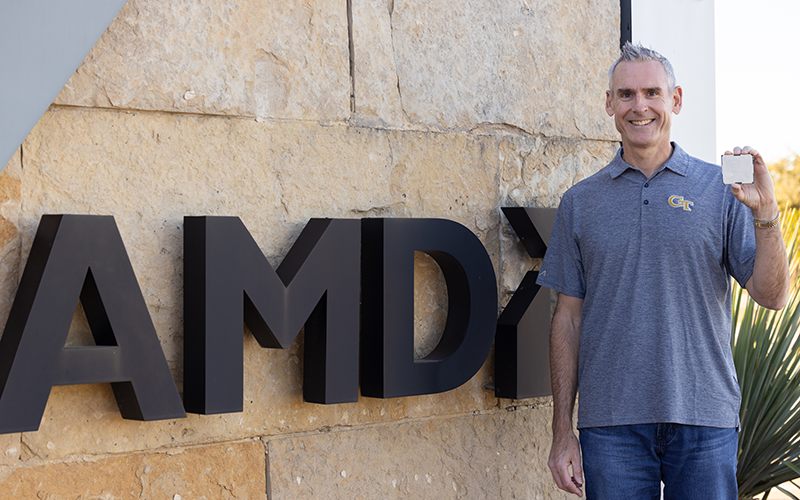The Future of Spaceflight: Piloting a Space Station
By: Jennifer Herseim | Categories: Alumni Achievements

According to Gabriel Morocoima's heart-rate monitor his pulse was skyrocketing. He was watching a spacecraft (which was also skyrocketing) as it broke through the atmosphere and barreled toward the International Space Station.
Minutes earlier, Morocoima, AE 10, gave a “GO for launch” in a series of checks that sent SpaceX’s Dragon spacecraft on a historic mission. It marked the first time that a private spacecraft carried humans into space and the first time in almost 10 years that American astronauts returned to space from American soil.
Nich Picon, AE 14, was on the other end of the partnership as In-Flight Abort Mission Manager at SpaceX.
At his console that afternoon, Morocoima was reminded of his first time in mission control. He was an aerospace engineering student shadowing flight controllers through Tech’s co-op program. “You walk in and instantly get this deep sense of understanding that, ‘hey, we’re flying things in space’,” he says. “It’s humbling to know that your decisions directly affect a spaceship and the lives of those onboard.”
After graduating in 2010, Morocoima joined NASA in time to catch the launch of the last NASA shuttles before the program was retired in 2011. For the SpaceX-NASA launch, he was lead Attitude Determination and Control Officer flight controller, which meant he and his ADCO team were piloting the space station.
 The real work for Morocoima and his team began the day after the launch. A lot was riding on them to maneuver the station for the Dragon to safely dock and deliver astronauts Bob Behnken and Douglas Hurley onboard. As Dragon fired its jets, moving meter by meter toward the ISS, the station seemed to be at a standstill. In reality, it was traveling at 17,500 miles per hour.
The real work for Morocoima and his team began the day after the launch. A lot was riding on them to maneuver the station for the Dragon to safely dock and deliver astronauts Bob Behnken and Douglas Hurley onboard. As Dragon fired its jets, moving meter by meter toward the ISS, the station seemed to be at a standstill. In reality, it was traveling at 17,500 miles per hour.
To control the ISS, which weighs about 925,000 lb. on Earth, Morocoima and his team use a slew of navigation sources, including GPS, to determine its attitude, or orientation, and thrusters and control moment gyroscopes (CMGs) to maneuver and control the station. “The fact that we can rotate some wheels and move a space station the size of a football field still blows my mind,” Morocoima says. ADCO moved the ISS into just the right spot for docking. As it did, the Dragon spacecraft was officially christened Endeavor by its crew.
Morocoima remembers the exact moment when he realized he wanted to work for NASA. He was 5 years old on a tour at the Kennedy Space Center. “I got a glimpse of my first shuttle out on the pad, and I remember the name was Endeavor,” he says. Twenty-eight years later, he would guide the ISS to welcome a spacecraft with the same name as the first one he’d laid eyes on.
“The fact that the spacecraft was named Endeavor was personally very humbling,” he says.


